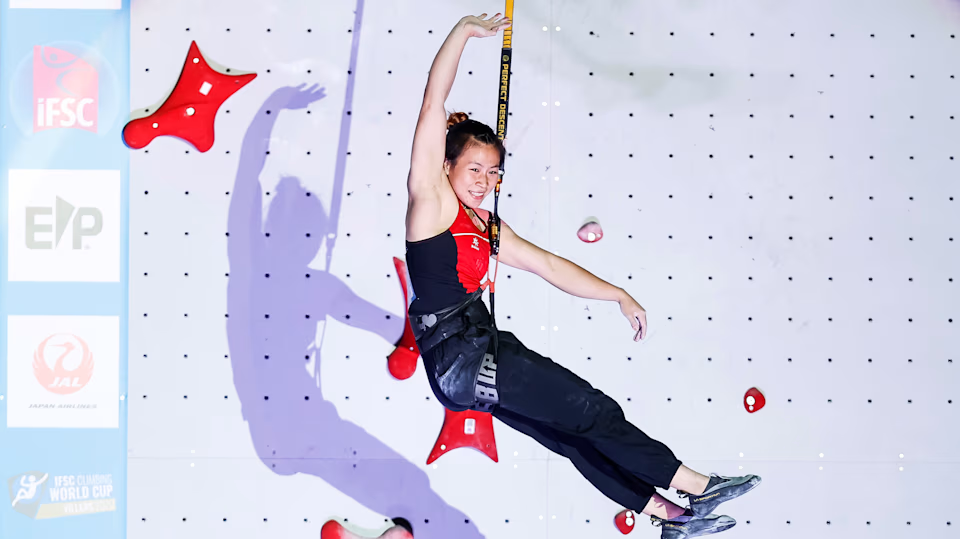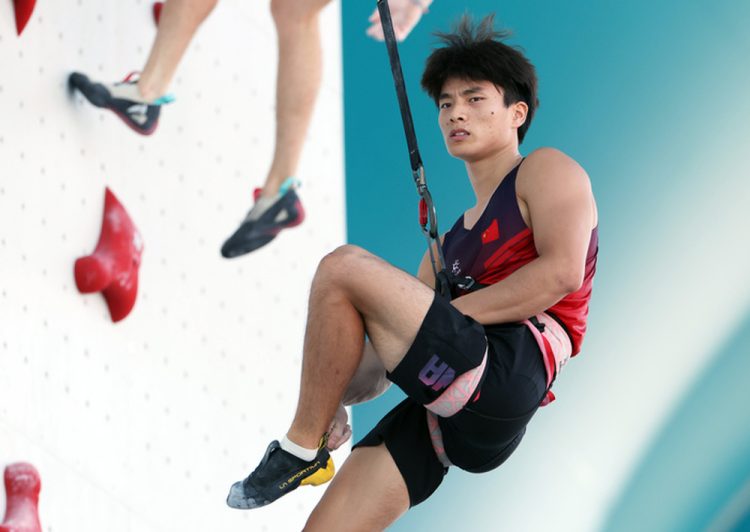As the Paris 2024 Olympics approaches, the International Olympic Committee (IOC) continues to make bold decisions aimed at attracting younger audiences and embracing the evolving nature of global sports culture. One of the most controversial additions to the Paris 2024 program is the inclusion of Breaking (Breakdancing) and Sport Climbing, both of which cater to a younger, more trend-driven audience, primarily from Gen Z. While these sports may have been seen as niche or unconventional in the past, they now stand alongside the traditional Olympic powerhouses like athletics, gymnastics, and swimming.
However, with this inclusion, a growing chorus of experts, former athletes, and sports purists are raising concerns: Is the Olympics sacrificing its traditional values to cater to a fleeting trend? Are the values of discipline, hard work, and physical excellence being overshadowed by a focus on “flow”, “viral appeal”, and marketability? Are we seeing the beginning of the erosion of traditional sports values, as the Olympics increasingly aligns itself with the demands of Gen Z and their social media-driven world?
This article delves into the rise of Breaking and Sport Climbing in the Olympic sphere, examines the factors that have led to their inclusion, and explores the warnings issued by experts who fear that these changes might ultimately undermine the ethos of traditional sports.
1. The Evolution of the Olympics: Aiming for the Future
The Olympic Games have always been a dynamic entity, evolving over time. The competition has seen numerous sports rise and fall in prominence, and the IOC has consistently sought to adapt the Games to reflect cultural shifts and societal changes. From the initial inclusion of women’s events in the early 20th century to the addition of snowboarding and skateboarding in recent years, the Games have historically adjusted to the times.
With the rise of social media, digital culture, and the dominance of Gen Z, the IOC is now faced with a new challenge: how to remain relevant in an era where attention spans are short, and online viral moments have become the new benchmark for success. The Olympics has long been regarded as a symbol of tradition, discipline, and global unity, but these new additions are a marked departure from that.
The inclusion of Breaking (breakdancing) and Sport Climbing is part of the IOC’s larger strategy to appeal to the younger demographic that is less interested in traditional Olympic sports and more in line with extreme sports, urban culture, and the rapidly changing landscape of global entertainment.
2. Breaking: From Underground Culture to Olympic Glory
The decision to add Breaking to the Olympic roster might seem surprising to some, given its origins in the underground dance scene of the 1970s Bronx. Born as an expressive dance form on the streets of New York, it became a symbol of urban culture and youth rebellion. The term “Breaking” is often used interchangeably with breakdancing, but it is essential to recognize that the term has evolved to reflect the respect and seriousness that the sport now commands.
In its Olympic form, Breaking will consist of solo battles, where dancers, known as b-boys or b-girls, perform routines set to music while showing off a wide range of technical and artistic skills. The inclusion of Breaking in the Olympics is viewed by some as a celebration of street culture and a recognition of urban sports that have long been overlooked in traditional sports frameworks. Yet, for others, it is seen as a commodification of a culture that was originally about individual expression and community rather than mainstream competition.
Despite its popularity among Gen Z and its global fanbase, there are critics who argue that bringing Breaking into the Olympics will distort the sport’s original values of self-expression and creativity. The very essence of Breaking was about freedom — freedom to create, to innovate, and to defy the system. Now, as it enters the hallowed grounds of the Olympics, there is a feeling that this once nonconformist sport is being co-opted for commercial purposes and to fulfill the demands of a youth market obsessed with trends.
3. Sport Climbing: A New Kind of Physical Challenge
The addition of Sport Climbing to the Olympic program in 2020 and its continuation into Paris 2024 represents a shift towards more action-packed and risk-oriented sports. It reflects the growing popularity of climbing as a recreational and competitive sport, particularly among younger generations who are drawn to its physical challenge, adventure, and connection with nature.
Climbing has been part of youth culture for some time, with rock climbing gyms popping up in cities worldwide. Sport Climbing’s Olympic debut in Tokyo 2020 was received with enthusiasm, and many see it as a perfect fit for the modern Games, bringing a sense of adventure, individualism, and precision to the event. It was seen as a means of infusing a dose of extreme sports into the Olympics, aligning with the interests of adrenaline-seeking youth.
However, the sport’s inclusion has also raised concerns among traditionalists, who argue that climbing — especially in its competitive format — is becoming increasingly mainstream and commercialized. The shift from climbing’s roots in nature to artificial walls and regulated competitions seems to dilute its core values of exploration and self-reliance. As climbing becomes more institutionalized and commodified, some wonder if its authenticity will suffer, and whether it will eventually lose its appeal to the grassroots communities that initially made it popular.

4. The Rise of “Gen Z” and the Demands of the New Sports Market
The inclusion of Breaking and Climbing reflects a larger trend within global sports culture, where there is a growing emphasis on appealing to Gen Z. This generation, more connected and socially conscious than ever, is not interested in simply watching sports for athletic prowess alone. Instead, they are drawn to the aesthetic of sports, their connection to youth culture, and their potential for social media virality.
Gen Z is known for its short attention spans, and they demand content that is instantaneous, visually striking, and relatable. This has led to a greater emphasis on short-form competitions, freestyle events, and sports that resonate with street culture or extreme subcultures. The success of sports like skateboarding, surfing, and parkour — all of which blur the lines between athleticism and creativity — is a direct response to this shift in consumer behavior.
For the IOC, the allure of Gen Z is hard to resist. With social media platforms like TikTok and Instagram dictating what is cool, the Olympic Games are fighting for relevance in a digital age where content is consumed in seconds and attention spans are fragmented. The “viral” culture has overtaken traditional sports viewership, and the Olympics must adapt in order to capture a younger audience.
But this comes with trade-offs. The focus on youth appeal and the desire to attract viral attention through breaking, climbing, and similar sports may not always align with the core values of discipline, hard work, and tradition that have historically been central to the Olympic movement. Experts argue that the “flow” and “cool factor” of these new sports might undermine the deeper values of sportsmanship, sacrifice, and commitment that have always defined traditional Olympic sports.
5. Experts Warn: The Erosion of Traditional Olympic Values?
The addition of sports like Breaking and Sport Climbing is not without its detractors. Many former Olympians and sports commentators have expressed concern that the inclusion of these “Gen Z” sports risks undermining the traditional ethos of the Games.
Former athletes argue that the Games should remain a celebration of athletic excellence, where years of dedication, training, and sacrifice are recognized and rewarded. Sports like gymnastics, swimming, and athletics have always represented the pinnacle of physical achievement, requiring years of rigorous training and discipline.
By prioritizing sports with shorter-term appeal or those more easily adapted to social media trends, some argue that the Games may be diluting the sense of hard-earned glory that has defined the Olympics for over a century. The growing trend of sports as entertainment, with a focus on marketability, may be seen as undermining the spirit of competition, where the best athletes emerge not from commercial viability, but from a history of hard work and mastery of their craft.
6. Conclusion: A Balancing Act Between Tradition and Innovation
As the Paris 2024 Olympics draw closer, the inclusion of Breaking and Sport Climbing highlights the ongoing battle between tradition and innovation. The IOC is making moves to stay relevant in an increasingly media-driven world, but there is a valid concern that, in doing so, it may be undermining the very values that have made the Games a symbol of global athletic achievement.
In the end, the challenge lies in finding a balance between honoring the traditions of Olympic sports, while also embracing the future and the cultural shifts driven by younger generations. Only time will tell whether these new additions to the Olympic program will be remembered as bold innovations or as compromises that erode the foundational spirit of the Games.
What is certain, however, is that the face of the Olympics is changing — and Gen Z is leading the charge.


































Discussion about this post